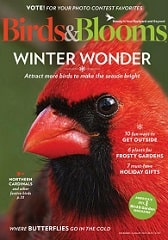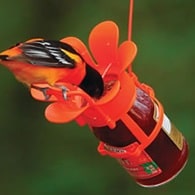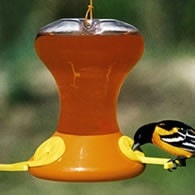Birdwatching Journals: Preserve Your Bird Watching Experience

If you have never considered keeping a birdwatching journal, maybe now is a good time to consider the best way.
Author Rick Chapo and the team explains the ins and outs of keeping a birdwatching journal and why you would want to.
Bird Watching is a great way to escape the rat race and be one with nature. Alas, your bird watching experiences can fade with time.
The best way to prevent this is to keep a bird watching list that tracks your sightings and trips.
Bird Watching Journals
Take a minute to give some consideration to your most recent bird watching experience. What sticks out in your mind? Now think about the first time you ever went bird watching.
Undoubtedly, you remember few things about the geography, people you went with, every bird sighted and so on. The experiences you've forgotten are lost to time.
If you had kept a journal or list, this wouldn't be the case.
A good bird watching journal combines a number of characteristics. First, it should be compact so you don't have to take up unnecessary space for other things.
Second, it should have a case to protect it from rain, spills and so on.
Third, it should contain blank areas to write your notes.
Fourth, the journal should contain cue spaces to remind you to keep notes on specific bird things.
These should include:
- Who you went birding with,
- Where you stayed and if you enjoyed it,
- Who you met and contact information for them,
- The geographic and weather conditions, and
- The birds you sighted and added to your life list.
At the end of the trip, you should be able to get the following from your birding journal:
- Contact information for other bird watchers and people you met,
- Enough detail to provide you or a friend with a guide if you travel to the location a second time.
- Memories to reflect upon years later, and
- Something to pass on to your children and grandchildren.
To get the most out of your bird watching journal, you should write in it during and immediately after birding.
Every sighting brings new experiences even if you're just sitting in your backyard.
Bird watching is a great way to commune with nature. Make sure to preserve the experience.
You Might Also Like:
What is a Birdwatching Journal?
A birdwatching journal is a record of your birdwatching experiences. It is a place where you can document your sightings, observations, and thoughts about the birds you have seen.
It can be as simple or as detailed as you like, and it can be in any format you choose, whether it's a traditional paper journal or a digital one.
Why Keep a Birdwatching Journal?
There are many benefits to keeping a birdwatching journal. Here are just a few:
Record Keeping: A birdwatching journal is a great way to keep track of the birds you have seen, where you saw them, and when you saw them.
Memory Preservation: Memories of birdwatching experiences can fade over time, but a journal can help preserve those memories.
Looking back on your journal entries can bring back the excitement and wonder of your past birdwatching adventures.
Skill Development: Writing in a birdwatching journal can help improve your birdwatching skills.
By documenting the details of the birds you have seen, you can become more observant and better able to identify different species.
Education: A birdwatching journal can be a great educational tool.
By recording your observations and researching the birds you have seen, you can learn more about bird behavior, habitat, migration patterns, and more.
Inspiration: A birdwatching journal can be a source of inspiration for your future birdwatching adventures.
Looking back on your past sightings can give you ideas for new places to explore and new species to look for.
How to Keep a Birdwatching Journal
Keeping a birdwatching journal is easy and fun. Here are some tips to help you get started:- Choose a Format: There are many formats you can choose for your birdwatching journal.
You can use a traditional paper journal, a notebook, a digital journal, or a combination of these. Whatever format you choose, make sure it is easy to use and convenient for you.
- Decide What to Record: Decide what information you want to record in your journal.
This can include the date, time, location, weather conditions, bird species, behavior, and any other observations you want to make.
- Use Descriptive Language: Use descriptive language to record your observations. Describe the bird's size, shape, color, and any unique features.
Note the bird's behavior, such as what it was eating or how it was interacting with other birds.
- Take Notes: Take notes while you are birdwatching. You can record your observations in real-time or make notes immediately after your birdwatching session.
Don't worry if you don't know the name of a particular bird - you can always look it up later.
- Include Sketches or Photographs: Consider including sketches or photographs of the birds you have seen.
These can be a great way to help you remember the details of the bird's appearance.
- Research: Research the birds you have seen. Look up information on their behavior, habitat, and migration patterns. This can help you learn more about the birds you are observing and enhance





